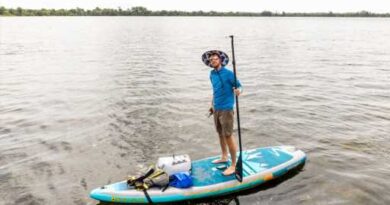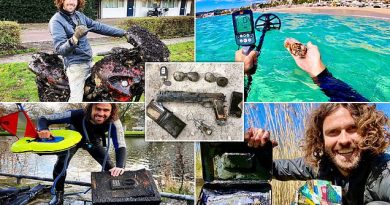Joan Didion on the Uninhibited Pleasures of Hearst Castle
Like many Californians, Joan Didion would often catch glimpses of San Simeon’s Hearst Castle from Highway 1 as a child. Yet when she finally visited it as an adult, “It was what I expected, and it was not,” she writes in her essay “A Trip to Xanadu.” “Make a place available to the eyes, and in certain ways it is no longer available to the imagination.”
These reflections—as well as meditations on Martha Stewart, the Greyhound bus, and much more—are included in her latest essay collection, Let Me Tell You What I Mean, which comprises 12 previously published pieces drawn from the earlier part of her five-decade career. And as with all her work, the state of California makes frequent appearances throughout.
Below, an excerpt from her 1968 essay about visiting William Randolph Hearst’s fantastical San Simeon castle.
“A Trip to Xanadu”
It has been for almost half a century a peculiar and affecting image in the California mind: San Simeon, “La Cuesta Encantada,” the phantasmagoric barony that William Randolph Hearst made for himself on the sunburned hills above the San Luis Obispo County coast. California children used to hear about San Simeon when they were very small (I know because I was one of them), used to be told to watch for it from Highway 1, quite far in the distance, crested on the hill, the great Moorish towers and battlements shimmering in the sun or floating fantastically just above the coastal fog; San Simeon was a place which, once seen from the highway, was ever in the mind, a material fact which existed in proof of certain abstract principles. San Simeon seemed to confirm the boundless promise of the place we lived. The gates were always barred on that road up the hill, and yet there was a kind of frontier accessibility about the Hearsts; the Hearst money was Western money, money that had come originally from a silver strike in Nevada, money made and spent in a singularly Western spirit of luck, imagination, irresponsibility, and general flamboyance. If a Hearst could build himself a castle, then every man could be a king.
San Simeon was dedicated to the proposition that all the pleasures of infinity are to be found in the here and the now. The leaves never fell at San Simeon, nothing went bare or died.
‘Let Me Tell You What I Mean’ by Joan Didion
$23.00, Bookshop
San Simeon was, moreover, exactly the castle a child would build, if a child had $220 million and could spend $40 million of it on a castle: a sand castle, an implausibility, a place swimming in warm golden light and theatrical mists, a pleasure dome decreed by a man who insisted, out of the one dark fear we all know about, that all the surfaces be gay and brilliant and playful. More than any other place ever built in this country, San Simeon was dedicated to the proposition that all the pleasures of infinity are to be found in the here and the now. The leaves never fell at San Simeon, nothing went bare or died. All year long the roses and fuchsia and the bougainvillea blossomed, half a million gallons of water glittered in the great pools, zebras and eland roamed the golden hills. The carillon bells could be heard for thirty miles. Brilliant Sienese flags fluttered over the long refectory dining tables. The guests ate pressed duck and wiped their hands on paper napkins: again, a child’s fantasy, every meal a picnic. The spirit of San Simeon was uninhibited by nervous adult distinctions about what was correct and what was not, what was good and what was less good, what was “art” and what not: if William Randolph Hearst liked something he bought it, and brought it to San Simeon. And a child would people his castle with exactly the same cast: there was the omnipotent King, the spurned Queen, the captive Princess from another land. There were the ambitious underlings, bearing dispatches from the capitals of the earth. And of course there were the courtiers, the decorative courtiers, some of whom came for the weekend and stayed for months, because no one was banished from this court unless he drank too much, or mentioned death. There were to be no shadows at all in this fairy tale: San Simeon was to be the kingdom where nobody dies.
Excerpted from Let Me Tell You What I Mean by Joan Didion. Copyright © 2021 by Joan Didion. Excerpted by permission of Alfred A. Knopf, a division of Penguin Random House LLC. All rights reserved. No part of this excerpt may be reproduced or reprinted without permission in writing from the publisher.
Buy now: bookshop.org, $23
Source: Read Full Article



